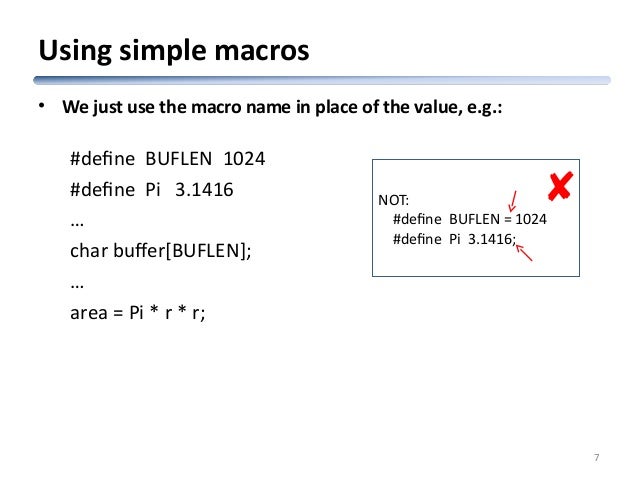
In OOCX we have two layers (at least conceptually speaking), one in which objects resides and another in which types (classes) resides. Also it accepts a variable argument list (this is a characteristic of the C standard library), so we can pass any additional argument the function needs. What this function will do it is to call a function ref accessed through the type of an object passing the object itself as a parameter to the function being called. * get function ref from "action" arg and "obj" arg*/ /* call function ref passing to it as a parameter "obj" arg and rest of possible arguments*/ Doing this you get object itself passed as an implicit parameter to the function being called. In OOP, you call functions through objects.
MACRO DEFINITION IN C CODE
None static elements of a class would be variables, while functions or code or processes would be static, that is, allocated only once and each object having a reference to where the code it is defined when they need to execute that process. Static would be information shared among all objects (instances) of a type or class, and none static would be allocation of memory in each object (instance) to allow for information specific (belongs to) each object. This is achieved by understanding the difference between static and none static information in a class.

:max_bytes(150000):strip_icc()/Macro-tools-excel-56a8f8955f9b58b7d0f6d519.jpg)
With OOCX you will be able to do OO programming with C with the same ammount of hand code typing than in any other OO prepared language.

But in an OO programming language we need to be able to define whatever number of named classes and also an instantiation mechanism (that is, not only pure static classes) and also an inheritance mechanism. Download oocx_use.zip - 10.4 KB IntroductionĬ would be in relation to OOP as a language which allows only to be defined a unique pure static class, that is, a class with only static members (functions and vars).


 0 kommentar(er)
0 kommentar(er)
